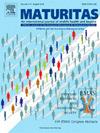生物年龄评估方法。系统综述
IF 3.6
2区 医学
Q2 GERIATRICS & GERONTOLOGY
引用次数: 0
摘要
长期以来,人们一直建议用生理年龄来补充实足年龄,因为它有可能更准确地评估一个人的衰老过程和功能状态。目前,有几种方法可以通过测量衰老的生物标志物来确定个体的生物年龄。这篇综述比较了评估成人生物年龄的方法,分析了衰老的生物标志物,并确定了计算生物年龄的目标,以帮助确定测量生物年龄的黄金标准。如果研究包含一个测试组和计算生物年龄的统计方法,则文章符合条件。文献研究包括Medline、Embase、Cochrane Library、Web of Science和ClinicalTrials.gov等数据库。总共纳入56项研究,并对每项研究的偏倚风险进行了评估。最常用的生物年龄评估方法有Klemera和Doubal法、主成分分析、多元线性回归、PhenoAge和Hochschild法。Klemera和doual的方法被证明是最可靠的。除了使用不同的统计方法外,生物衰老评分的差异还在于衰老生物标志物的选择,特别是将实足年龄作为衰老的生物标志物。大多数纳入的研究旨在建立一个新的生物衰老评分,或将生物年龄与人体功能的不同测量值进行比较。总之,对金本位制仍未达成共识,有必要对这一主题进行更多的研究。研究协议PROSPERO ID: CRD42021287548本文章由计算机程序翻译,如有差异,请以英文原文为准。
Methods for the assessment of biological age – A systematic review
Biological age has long been proposed to complement chronological age because it has the potential to provide a more accurate assessment of someone's ageing process and functional status. At present, there are several methods to determine an individual's biological age through the measurement of biomarkers of ageing. This review compares methods for assessing biological age in adults, analyses biomarkers of ageing, and determines the goals for which biological age can be calculated, in order to help determine a gold standard for measuring biological age. Articles were eligible if studies included a test battery and statistical method to calculate biological age. Literature research included the databases Medline, Embase, Cochrane Library, Web of Science and ClinicalTrials.gov. In total, 56 studies were included and the risk of bias in each of them was assessed. The most commonly used methods to assess biological age are Klemera and Doubal's method, principal component analysis, multiple linear regression, PhenoAge and Hochschild's method. Klemera and Doubal's method has proved the most reliable. Apart from using different statistical methods, the difference between the biological ageing scores lies in the choice of biomarkers of ageing, especially the inclusion of chronological age as a biomarker of ageing. Most of the included studies aimed to establish a new biological ageing score or compare biological age to different measurements of functionality of the human body. In conclusion, there is still no consensus on a gold standard and more research on this topic is necessary.
Study protocol PROSPERO ID: CRD42021287548
求助全文
通过发布文献求助,成功后即可免费获取论文全文。
去求助
来源期刊

Maturitas
医学-妇产科学
CiteScore
9.10
自引率
2.00%
发文量
142
审稿时长
40 days
期刊介绍:
Maturitas is an international multidisciplinary peer reviewed scientific journal of midlife health and beyond publishing original research, reviews, consensus statements and guidelines, and mini-reviews. The journal provides a forum for all aspects of postreproductive health in both genders ranging from basic science to health and social care.
Topic areas include:• Aging• Alternative and Complementary medicines• Arthritis and Bone Health• Cancer• Cardiovascular Health• Cognitive and Physical Functioning• Epidemiology, health and social care• Gynecology/ Reproductive Endocrinology• Nutrition/ Obesity Diabetes/ Metabolic Syndrome• Menopause, Ovarian Aging• Mental Health• Pharmacology• Sexuality• Quality of Life
 求助内容:
求助内容: 应助结果提醒方式:
应助结果提醒方式:


